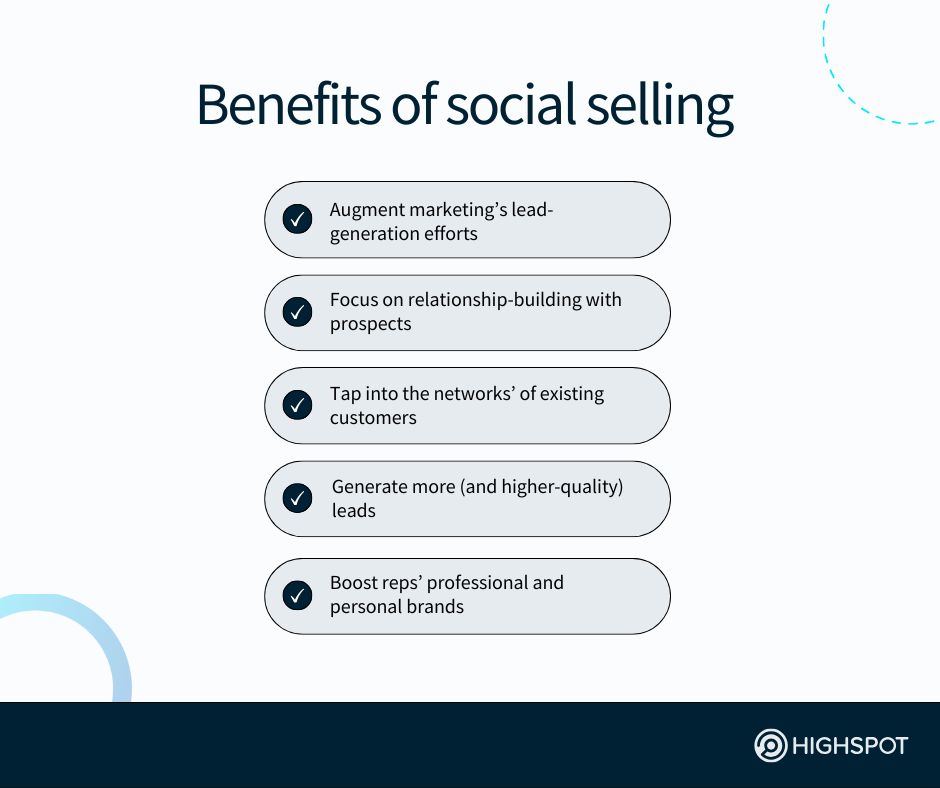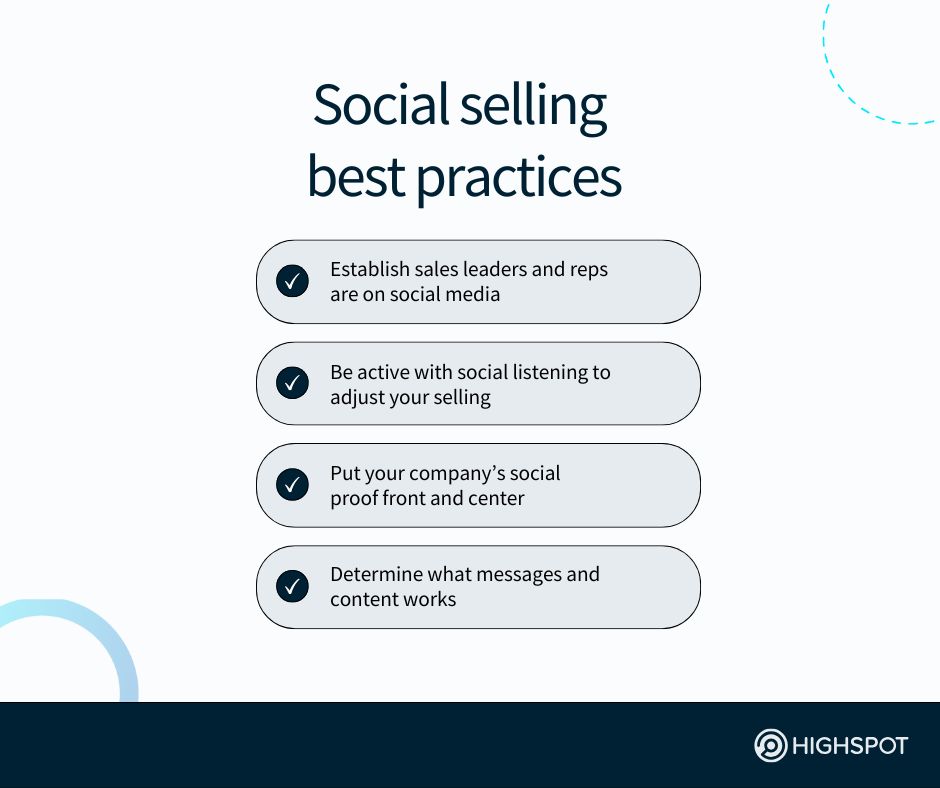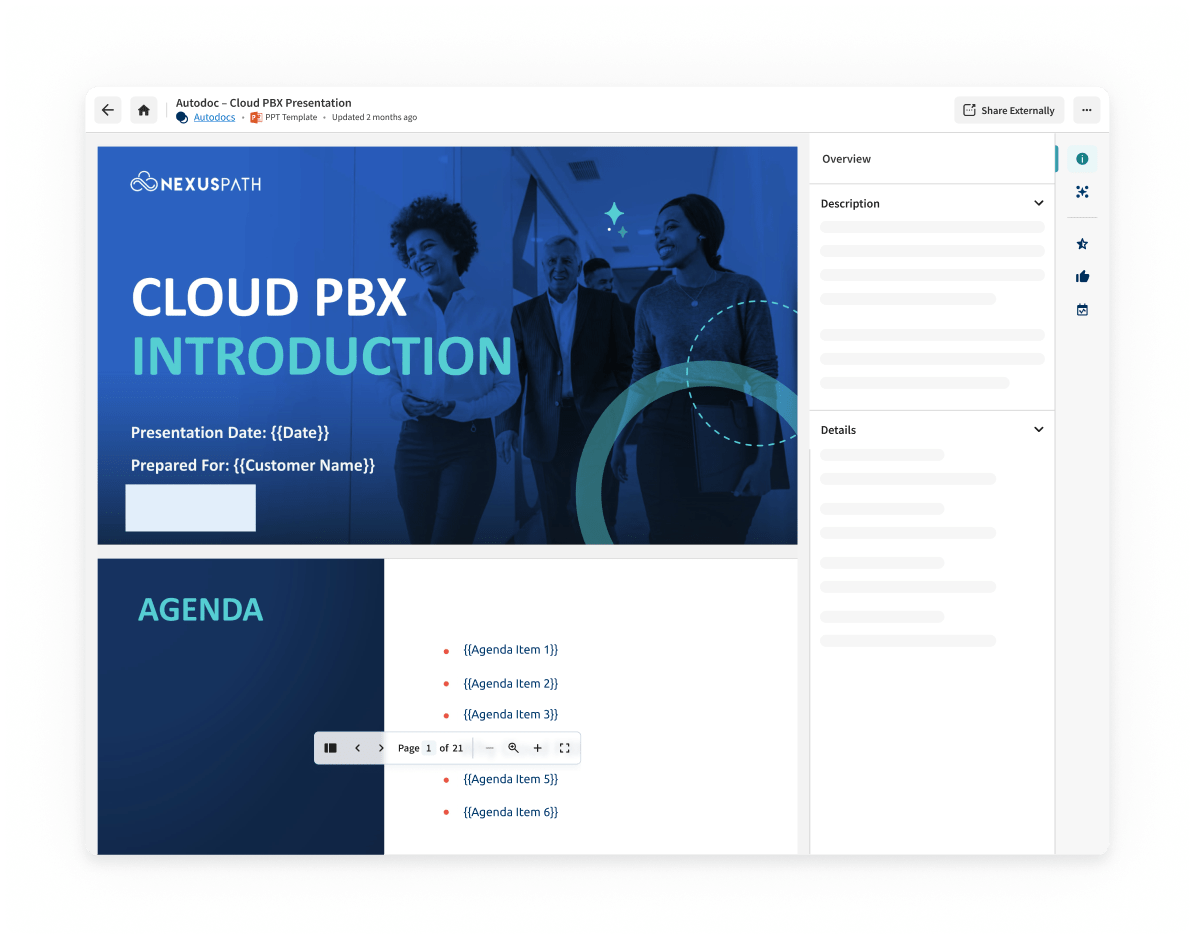Key takeaways
- Engaging stakeholders at high-value business accounts on social media—notably, LinkedIn—offers a number of advantages for today’s enterprise sales teams.
- While marketing and enablement craft content to boost buyer and brand engagement, sales reps should spend time sharing those assets with select leads on social media.
- Pipeline marketing, industry events, and cold calling remain vital for generating leads, but social selling offers another viable lead-gen and -nurturing approach.
The pressure on sales representatives to perform today (read: move faster, show up sharper, and close more) is high, to say the least. A combination of ambitious revenue targets from their leadership teams, lots of competition, and shifting market conditions means reps have to make every second of their workdays count.
Add in the fact that today’s sales forces face “long hours, constant rejection, and relentless quotas [that] can wear down even the best reps,” as change management and company culture expert Chris Dyer recently wrote for Inc., and it’s easy to see why sellers are burning out and missing sales targets.
The good news? There’s a sales approach that is helping many B2B reps boost their sales productivity, gain new sales skills, and develop genuine connections and nurture relationships with the right prospects: social selling—a proven, virtual-selling technique employed by many leading sales teams.
What is social selling?
Social selling is a sales methodology where sales professionals use social media platforms, including LinkedIn, to engage directly with prospects who match their ideal customer profile (ICP) by sharing valuable content, building relationships, and fostering trust, rather than relying on traditional cold outreach methods.
By strategically positioning themselves as knowledgeable resources on their product or service category and industry through consistent interaction with their target audience, sales reps can execute social selling tactics that enable them to identify new leads and establish and deepen connections with them over time.
The social selling process, explained
The typical social-selling workflow for sales teams essentially boils down to spending time on LinkedIn, in particular, daily to efficiently build relationships and generate pipeline.
Some common social-selling techniques carried out by top-performing salespeople include:
- Allocating focused time each week—typically 10-15%—to actively engage with potential customers on social channels
- Identifying and targeting potential buyers by filtering social networks based on job titles, demographic criteria, and firmographic details
- Researching and personalizing interactions by reviewing prospects’ profiles, company activities, and mutual connections to ensure messaging relevance
- Sharing relevant content, including articles, guides, white papers, sell sheets, and customer success stories, tailored specifically to buyer challenges and interests
- Engaging prospects organically by commenting on their posts, responding thoughtfully to shared content, and participating in discussions they take part in
- Leveraging mutual connections to facilitate warm introductions, establish initial credibility with buyers, and get an ‘in’ with leads who otherwise would ignore messages
- Nurturing personal connections by moving online interactions offline, like setting up direct conversations or meetings once rapport has been established through LinkedIn
Whether you use a sales methodology like SPIN selling or the BANT sales approach, abiding by this proven process can help your team provide immense value to potential customers.
“As buyers reevaluate how they engage with organizations, providers must ignite action and put buyers first to create meaningful experiences,” Forrester VP and Research Director Amy Hayes recently explained, referencing Forrester’s The State Of Business Buying 2024 report.
A great way for your sales teams to ignite action and create meaningful experiences is to now spend time reaching out to your target audience across your social presence (and perhaps platforms and communities—think Reddit and Quora—you haven’t even explored yet).
By doing so, your sales organization can explore an alternate avenue to generate leads beyond traditional selling and marketing and, if fruitful, lessen reliance on cold calling and other activities that don’t build meaningful relationships with those in your target market.

Benefits of social selling
Turning your sales reps into proven social sellers offers several advantages for your company.
Augment marketing’s lead-generation efforts
As noted, social selling complements marketing’s lead-generation initiatives by amplifying brand- and product-centric content to relevant groups or individuals on popular social platforms.
By providing your salespeople with in-depth, yet ‘snackable’ sales collateral geared toward each buyer persona, your reps’ social sales activities can reinforce existing marketing messages and brand positioning and, in turn, drive stronger customer engagement (and sales success).
If you have a unified sales enablement solution like Highspot, your sales reps can also provide real-time feedback to your enablement and marketing teams about content effectiveness, like which one-sheet PDFs were clicked, how long leads spent looking at them, and how many times they opened them.
Focus on relationship-building with prospects
Rather than relying solely on transactional interactions like cold calling, social selling places a premium on genuine relationship-building.
By consistently sharing relevant content and insights, sales reps establish themselves as trusted industry leaders whose guidance prospects actively seek out.
Over time, individualized interactions help reps better understand prospects’ unique challenges, goals, and buying-process nuances.
This depth of customer engagement ultimately empowers your sales teams to provide tailored solutions, based on where each lead resides in their respective buying journey.
Tap into the networks’ of existing customers
Social selling enables reps to effectively leverage the networks of current customers to uncover and connect with new potential buyers.
By engaging satisfied clients through social platforms, sales teams can request introductions and referrals that carry greater credibility and impact than cold outreach.
Encouraging existing customers to publicly endorse and share relevant content further amplifies the sales strategy by reaching a broader audience.
This approach helps cultivate a community around the brand, driving organic conversations and enhancing overall sales engagement.
Generate more (and higher-quality) leads
Through proactive and intentional interactions leveraging social media platforms, social selling helps sales reps generate significantly higher-quality leads, compared to traditional methods.
By carefully detecting, researching, and engaging the right prospects online (ideally, those who have already expressed interest through their digital interactions), your sales team can ensure its outreach efforts align closely with actual buying signals so buyers are receptive to continuing the conversation.
A bonus of this targeted approach is that it helps reduce the amount of time reps spend chasing unqualified leads, resulting in greater efficiency and productivity for your sales force.
Boost reps’ professional and personal brands
Building their personal brands certainly comes second to getting more quality pipeline moving through their sales funnel, but social selling does offer reps the chance to boost their professional reputations.
- Indirect selling, like publishing LinkedIn posts that share their perspectives on timely industry trends, can show reps are ‘in the know’ and have informed opinions.
- Direct selling, such as sending InMail to potential customers asking to hop on a 15-minute call to learn about their business needs, helps your B2B salespeople position themselves as both thought leaders in your space and thoughtful reps who want to help your prospects’ most-pressing problems.
Simply put, a strong professional brand can go a long way in generating sales opportunities. (This is something your managers could work on with reps in sales training programs.)

Social selling best practices
Getting your social-selling efforts up and running sooner than later is a no-brainer.
Just remember to use these tried-and-true techniques to ensure your team—including sales leaders—makes the most of their time.
Establish sales leaders and reps are on social media
This one is obvious, but it’s nonetheless important: Your sales leadership, reps, and account executives should all be active on LinkedIn and any other social media platforms where your customers spend time.
That means commenting on posts, sharing visually compelling infographics and videos, discussing news and trends from your company’s vantage point, and keeping up with social media trends at large.
There’s a reason five in six (83%) of B2B salespeople think “the more that they invest in creating and nurturing as many buyer relationships as possible, the more successful they will be,” per LinkedIn’s 2024 Sales Leader Compass survey.
Being on social media (and often) helps with that.
Be active with social listening to adjust your selling
Being on social media isn’t just about publishing content and messaging leads for your social sellers. It’s also about staying aware of what competitors are up to, what your target audience is looking for in new solutions tied to your business model, and knowing what’s influencing buyers’ decision-making.
“‘A compelling story’ is a narrative that explains why your product or service will meet someone’s needs, especially in sales,” business experts Esther Troy and Gina Fong wrote for Harvard Business Review. “It involves listening, making an emotional connection, and thinking from the customer’s point of view.”

Put your company’s social proof front and center
Successful social-selling programs don’t have a ‘me-me-me’ mindset. Buyers don’t respond favorably to brands that pat themselves on the back and proclaim themselves the best in their vertical or industry.
What they do respond to is persuasive social proof in the form of customer stories: from short-form testimonials to long-form case studies.
Consider the social-selling strategies of go-to-market (GTM) teams with Highspot. Many use the AutoDocs capability of our unified sales enablement platform to automate content creation tailored to specific buyers.
Our GTM enablement software can find the most relevant assets your leads would find interesting and generates bespoke presentations you can share on social media or email.
Determine what messages and content works
You can’t improve what you don’t measure.
Of all the social-selling tools (more on those in a moment) in your sales tech stack, arguably the most important one is your enablement platform—as long as it has native sales analytics and intuitive sales dashboards every GTM can analyze with ease, that is.
“Engagement analytics provide quantified data on which pieces of content buyers are opening, downloading, and how long they engaged with each item,” according to Highspot’s Put an End to the Content Chaos whitepaper. “This gives sales reps a tremendous leg up while giving marketing and enable- ment teams the ability to discern what content is linked to revenue production.”
The top social selling tools
Prioritizing social selling and incorporating into your overall sales process is only worth your while when you have the right tools in your sales tech stack.
These sales tools for productivity include:
LinkedIn Sales Navigator
LinkedIn Sales Navigator is used by countless B2B sales organizations—and it’s easy to see why.
The platform helps sales teams like yours accelerate your social selling efforts by providing insights like the Social Selling Index (SSI), enabling you to measure and optimize your performance.
With advanced search capabilities, you can pinpoint decision-makers faster and tailor your sales pitch with greater precision.
Given that LinkedIn can generate top-tier leads based on your customized buyer criteria, you’re always connecting with prospects who are most likely to engage.
Social listening tools
Social listening tools like Brandwatch and Meltwater give your sales teams powerful insights into who mentions your business across various social channels, and precisely when and how they’re engaging.
With this real-time audience intel, your team can quickly respond to buying signals, address concerns, and identify upselling opportunities.
By analyzing brand perception, these tools allow you to proactively manage your online reputation and craft targeted sales messaging to outshine your competitors.
Sales enablement software
The best enablement platforms offer quick access to personalized content and audience insights.
For example, using Highspot’s Digital Sales Rooms, you can instantly share custom-tailored, branded content directly with prospects via social media and track their engagement to fine-tune your outreach.
Highspot’s AI-powered content recommendations ensure you always get intelligent suggestions regarding which collateral to send to buyers based on their pipeline stage and contact history, like what pain points and product needs they shared on previous conversations with your team.
Setting your reps up for social selling success
“As the relationships between reps and their buyers evolve, you need to seek ways to reduce complexity and increase efficiency to ensure alignment across all initiatives,” Highspot’s Why You Need a Sales Enablement Platform guide explains.
The B2B sales cycle will always be a bit messy (and B2B sales training will always be something managers are focused on).
One element of your selling approach you and your sales team have full control over, though, is the messaging you share with leads and the prospects you share content with.
Folding a social selling strategy into your overarching GTM motion means your reps have yet-another-option for connecting with potential customers, meeting quotas, and contributing to revenue growth.




